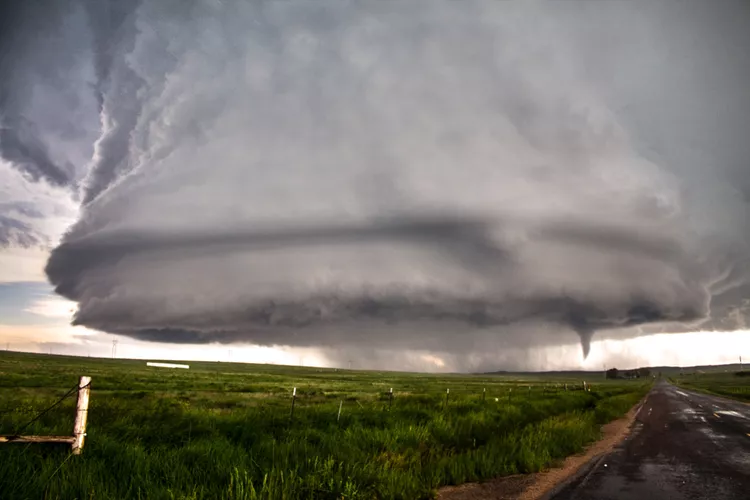Summary
If you are planning on RVing or camping in a tornado region, there are essential tips and information you should know before your trip, provided by the National Oceanic and Atmospheric Administration (NOAA). The United States experiences approximately 1,200 tornados each year, as per NOAA. Despite advancements in Doppler radar that improve tornado forecasting, warnings typically provide only three to 30 minutes of notice. Therefore, being prepared for a tornado is crucial.
Tornado Warning Systems
If you are RVing near a small town, it is likely there is a siren system that can be heard for several miles. Consequently, take a moment when you first arrive at your RV park to inquire about the tornado and storm warning systems in your area, even if you plan to stay for a short time.
Tornado Shelters
Find out if your park has an onsite shelter or the nearest shelter’s location. Basements and underground shelters offer the safest refuge, but sturdy interior rooms and hallways can also provide adequate protection during a tornado.
If there is no shelter onsite, consider using the park’s shower or bathroom stalls as alternatives. In cases where sturdy buildings are available, seek shelter in closets or interior hallways. If none of these options exist, drive to the nearest shelter as safely and quickly as possible while keeping your seatbelt fastened.
Tornado Preparedness Plan
The recommended actions by NOAA and the American Red Cross include:
- Monitor a NOAA Weather Radio.
- Know the location of nearby shelters, preferably within walking distance.
- Be prepared to take action when a tornado watch is issued.
- Move lawn furniture and other objects that could become projectiles indoors.
- Act immediately when a tornado warning is issued.
- Stay away from windows wherever you find shelter.
- Do not remain inside your RV.
- Bring your pets in a carrier, if permitted.
- Grab only essential items (purse, ID, cash) if easily accessible.
- Avoid wasting time searching for belongings.
- Regularly practice your tornado drill.
Signs of Potential Tornado
- Electrical charge in the air (hair on arms standing up, not always present)
- Large hail
- Lightning
- Roaring noise
- Grayish/greenish clouds
- Visibly rotating clouds
- A wall cloud appearing as thunderclouds dropping close to the ground
- Clouds progressively extending down to the ground, becoming funnel-shaped
- Rotating dust or debris rising from the ground, often “reaching” toward a descending funnel-shaped cloud
Inland and Plains Tornados
Tornados that develop on the plains and across many parts of the country are often accompanied by hail or lightning. These warning signs signal you to seek shelter until the storm passes. It is important to remember that every tornado begins in a specific location. If that location is near you, time to reach shelter will be limited.
Tornados can appear at any time, day or night, but nighttime tornados are particularly concerning since visibility is greatly reduced, and you might be asleep when they strike.
Tornados Spawned by Hurricanes
In contrast to inland tornados, those that develop in hurricanes typically occur without hail and lightning. They can also appear days after a hurricane makes landfall but usually develop during daytime hours shortly after the first few hours over land.
While tornados can form in a hurricane’s rainbands, they are most likely to be found in the right front quadrant of the storm. Understanding your location in relation to the hurricane’s eye can help improve your chances of avoiding tornados.
Fujita Scale (F-Scale)
You may have wondered about the meaning of the term “F-Scale,” such as a tornado rated F3. This rating system is somewhat unique, as most people expect ratings to derive from direct measurements. The F-Scale ratings estimate wind speed based on three-second gusts at the point of damage rather than straightforward wind speed measurements.
Initially developed by Dr. Theodore Fujita in 1971, NOAA adopted the Enhanced F-Scale in 2007 as an update to the original F-Scale. Based on this scale, tornados receive ratings as follows:
EF Rating = 3 Second Gust in MPH
0 = 65-85 mph
1 = 86-110 mph
2 = 111-135 mph
3 = 136-165 mph
4 = 166-200 mph
5 = Over 200 mph
Other Emergency Plans
Explore various emergency plans for RVs, covering a wide array of weather or natural disasters you might encounter. Comprehensive information about tornado preparedness is essential for travelers.
Updated and edited by Monica Prelle





